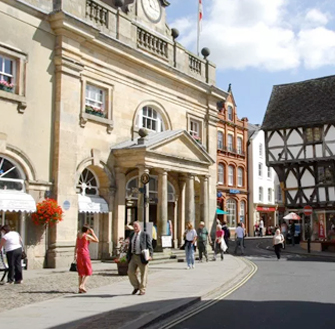
Your Council
Your most local and accessible tier of government.
History of ludlow Town Council

Until 1835, Ludlow was governed by the 'Ludlow Borough Corporation', a self-electing oligarchy of gentry and tradesmen. In 1835, following the Great Municipal Reform Act, Ludlow Borough Council was established, which provided the town with a democratically elected (by adult male ratepayers) Council of 12 Councillors and 4 Aldermen. The first Mayor of Ludlow was elected in 1836 from the members of the newly constituted Borough Council.
Dive into Ludlow's History
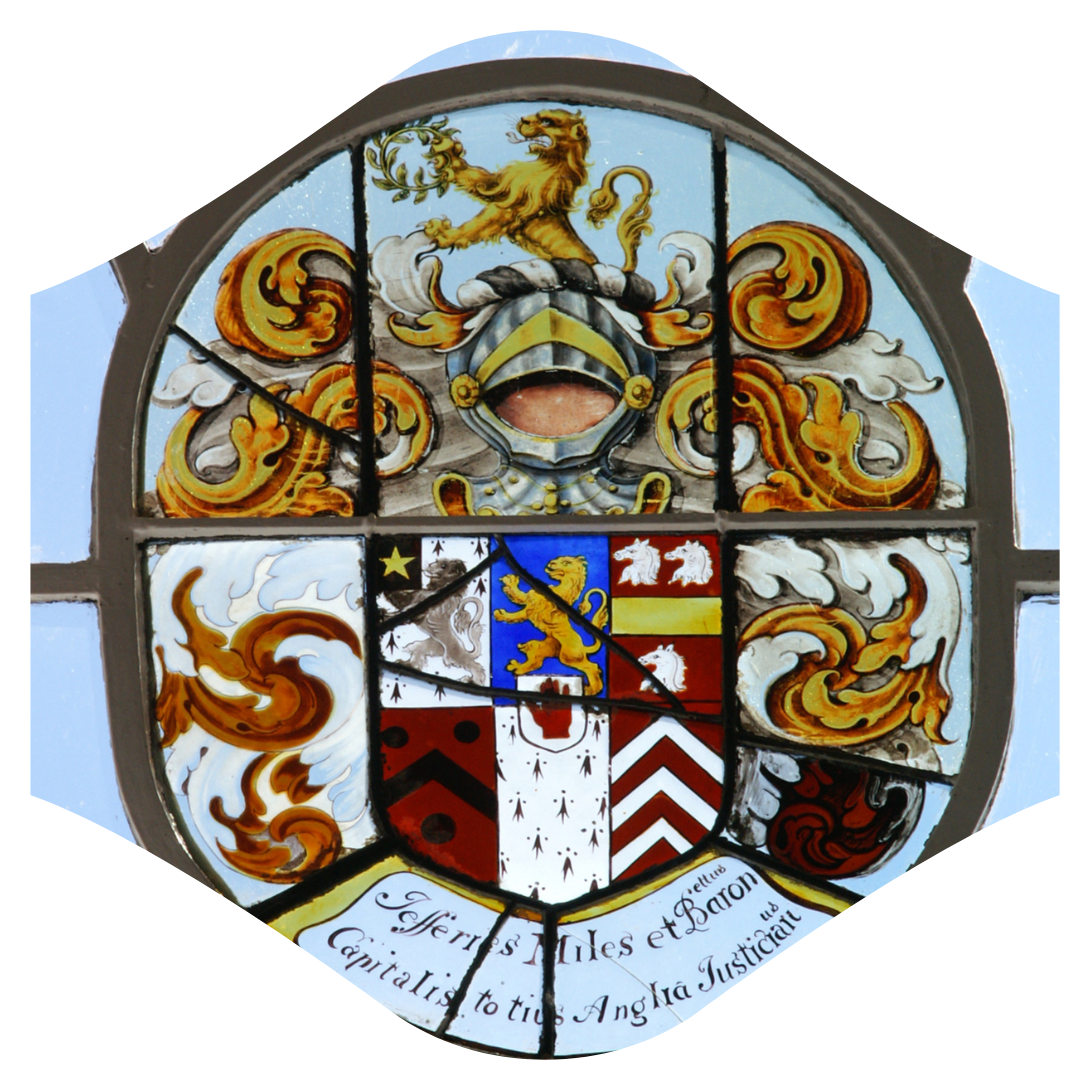
The town was incorporated at an early period in its history and from 6th July 1189 to 7th December 1461, it was governed by twelve Aldermen (the "chosen Twelve") and twenty-five Burgesses.
By a Charter conferred by King Edward IV, dated 7th December 1461, the interests of the inhabitants were transferred to two Bailiffs, Burgesses and Commonalty "to have perpetual succession and a Common Seal".
At later dates Charters were also granted by Richard III, Henry VIII, Edward VI, Mary, Elizabeth I, James I, Charles I, Charles II, William III and Mary. With the passing of the Municipal Corporations Act the government of the town was vested in a Mayor, Alderman and twelve Councillors.
The Ludlow Borough Corporation which consisted of 12 Aldermen and 25 Councillors, which were self elected. The Corporation was formally established in 1461 when Ludlow was incorporated as a Borough, it is of interest to note that the town is also vested with a 'Commission of the Peace'.
A peculiar custom that was still observed until at least the 1950s is the attendance of the Mayor and Corporation and the Mace Bearers with their Maces at the Parish Church each Sunday morning. These Maces together with the Mayor's Chain and Badge of silver gilt, and a number of town seals covering the period 1461 to 1836, constitute the Municipal insignia.
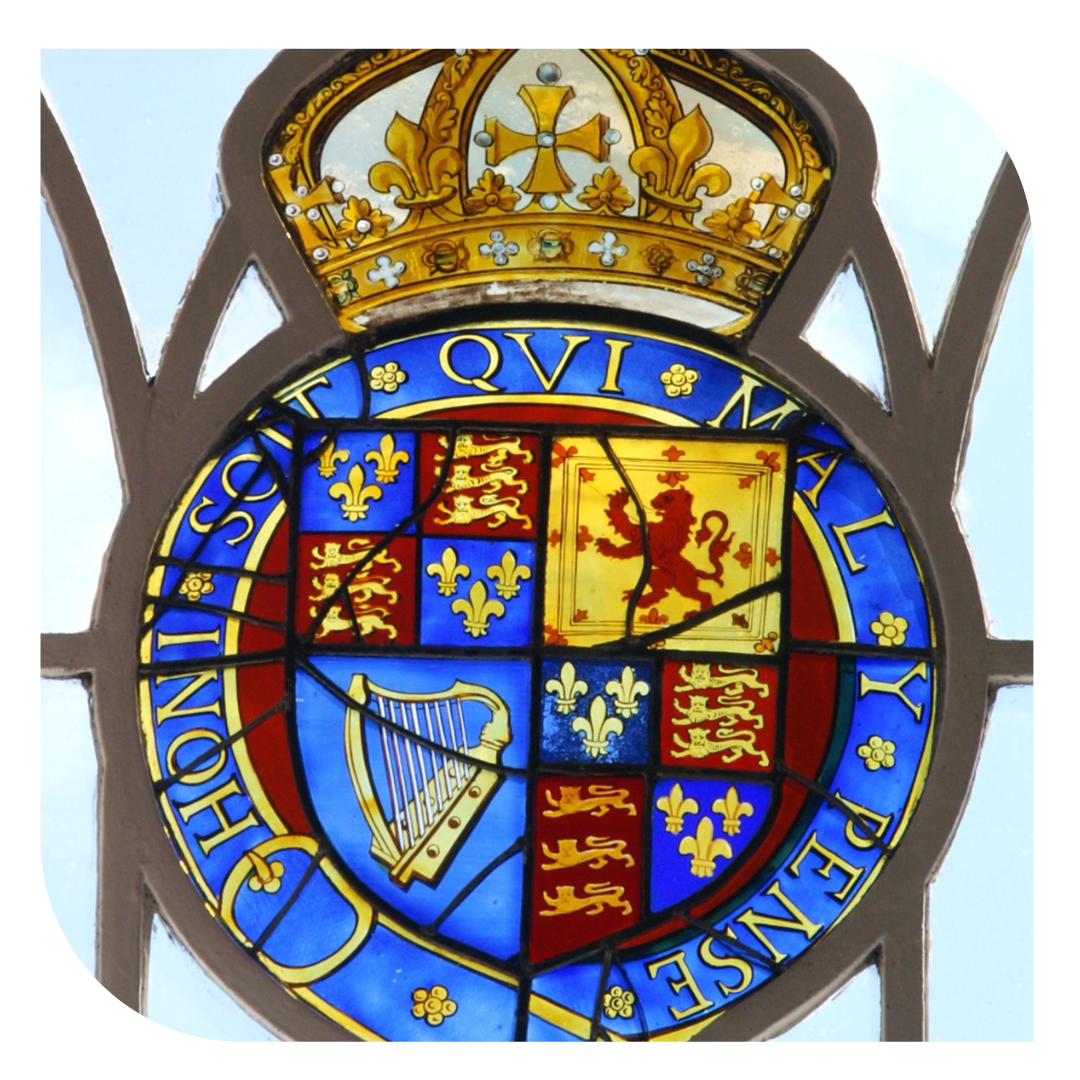
1889
In 1889, Shropshire County Council was created and took responsibility for education, roads and other centralised services.
1967
In 1967, Ludlow lost its borough status, with most of its powers and functions passing to Ludlow Rural District Council, based at Stone House in Corve Street, Ludlow.
1974
In 1974 the structure was amended to include the three tiers of Ludlow Town Council, South Shropshire District Council and Shropshire County Council. The Town Council having the same status as a parish council, except that it can elect a Mayor, as the first citizen of Ludlow.
2009
In 2009 further amendments to the local government structure saw the amalgamation of the counties District Councils, Borough Councils and Shropshire County Council to form Shropshire Council, a unitary authority based in Shrewsbury.
LUDLOW BUILDINGS AND MONUMENTS
Memorial to the Boer War
The model is from the original cast bronze national memorial to the South Australian soldiers who fought in the South African War unveiled in Adelaide, Australia in June 1904 be the Governor Sir George Le Hunte. The artist Captain Adrian Jones presented the model (a vigorous and artistic representation of a mounted Australian trooper on the summit of a rocky kopje) to Ludlow (his native town) the Mayor, Henry Lloyd Esq. gratefully accepted it on behalf of the Burgesses. The model was removed from the Town Hall during it demolition by South Shropshire District Council in 1986, at some point it was damaged with only the horses head being salvageable. Since then the head was housed at the War Memorial Trust, until it was returned to the town and restored and is now on display at Ludlow College's Palmers Hall.
_1.png)
BUTTERCROSS
The Buttercross stands upon the site of an ancient wooden cross built by missionaries around the time Christianity was taking hold in England and Wales between 410 and 500. This cross was a focal point in the town for a range of activities including the sale of dairy products.
The current Buttercross was designed by William Baker for just over £1,000 in 1743 and took the next 3 years to build. The upper floor's two rooms were designed to be the Town Clerk's office and the Corporation's meeting room. Though the rooms were rarely used for their original purpose and the Town Clerk later moved into the Market Hall.
One of the earliest users of the Buttercross was the Blue Coat Charity School who moved from the Guildhall in 1785 and remained in the Buttercross until they moved to the Bishop Mascall Centre in 1855. In the following years the Buttercross housed several other organisations including the Boy's National School and a men's club, until 1955 when Ludlow Museum opened in the upper rooms. The museum operated from the Buttercross until 1993 when it was moved to the ground floor of the Ludlow Assembly Rooms building.
In August 2016 Ludlow Museum returned to the Buttercross under the management of Ludlow Town Council. During the late 19th and early 20th century the Buttercross also housed the town's fire station on the ground floor to the left hand side of the building. Also since it was built the open market area to the right side of the building has been used by regular market traders and this continues to this day.
The old Town Hall
Ludlow's bad luck, the Market Hall of 1887 by Harry A Cheers of Twickenham. ‘There is nothing that could be said in favour of its fiery brick or useless Elizabethan detail’. The Victorian town hall, built to commemorate Queen Victoria’s Golden Jubilee in 1897, and the successor to a previous similar building on the same site. Henry Cheers later designed the City Hall in Hereford. Vilified by many, including Pevsner, it was demolished with unseemly haste in 1986 for structural reasons. The open space allows Castle Square to be appreciated in a way not seen since the Middle Ages.
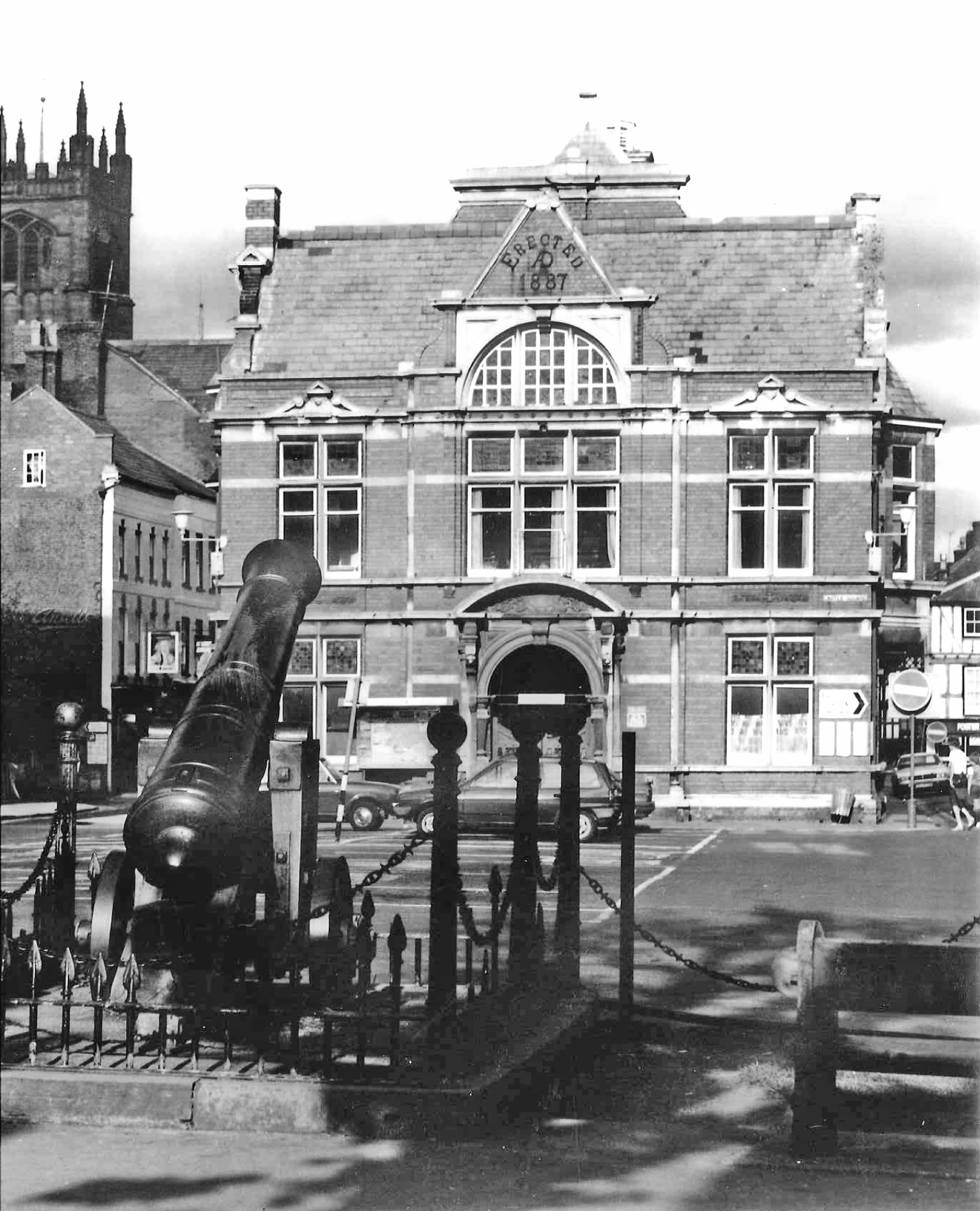
Guildhall, Mill Street
The Hall Of the Palmer Guild, built in the C15 and given its exceedingly pretty Gothic doorcase in 1768 (triple shafts with shaft-rings, frieze with quatrefoils - all a classical conception turned Gothic). The hall Itself has its original C15 roof with cusped slanting queen-posts.The Guildhall was the headquarters of the Palmers’ Guild, where they had meetings and feasts, such as the Pentecost feast, where expense accounts show huge quantities of wine consumed. It was taken over by the Corporation in 1551 and until very recently was still used as a courtroom. The original building has been dated by dendrochronology to 1411 and was an aisled hall (like a church) with a timber arcade. This is very rare in the west of the country. In Hereford, the Bishop’s Palace is an early example. In 1768, it was remodelled by Pritchard in the Gothic style and including its main doorway. The original 18th century furnishings survive in their entirety.
CASTLE SQUARE WAR MEMORIAL
The memorial was commissioned by the local Royal British Legion branch. Sculptor Walenty Pytel (1941), Polish-born contemporary artist based in the United Kingdom, recognised as a leading metal sculptor. A stylised cross with squat upper arms, symbolising suffering, and reconciliation, with a sword and wreath carved in relief at its centre. At the top are two doves taking flight. Below them, on a small, elongated platform formed by the tail feathers of one of the birds, is sculpture of a pigeon nesting. Dedicatory inscription on a plaque lower down the shaft of the cross concludes, "at the end of a millennium of conflict, looks forward to a millennium of peace on two sides around the base are set slate slabs bearing the names of deaths during WW1, WW11 and Korean Wars.
CLOCK BELL FROM ST LEONARD'S CHAPEL, CORVE STREET
The Buttercross faces down Broad Street and was built in 1743 – 46 to replace the 16th century New House, where the Corporation held its meetings. It was originally the site of the High Cross, which was the official centre of the town. The building was designed by William Baker of Audlem. The upper rooms have been used variously as a boys’ charity school and the Ludlow Museum.
THE CORPORATE PLATE

Displayed at the annual Mayor Making ceremony. The original plate was given to Charles I to be melted down during the Civil War, so the earliest pieces that remain are two small silver tankards donated in 1677 and 1680. In the past, it was customary for new members to present the Corporation with a silver spoon, but on occasions, the gifts were much more elaborate, such as the silver snuff and tobacco boxes.
Records show that by the 1590's Ludlow had accumulated a considerable amount of plate, much of it donated by members. In 1600 it was resolved that all new Councillors should 'deliver to the Corporation one Spoon of silver weighing two ounces', and from time to time these were melted down to make salts, cups and other items.
Plate - A silver gilt salver, the border cast with rococo scrolls, vines, beasts and flowers, the entre engraved presentation commemorative inscription dated November 1901 which reads "Presented to The Mayor and Corporation of Ludlow by H.D. Green Esq., K.C., M.P., Recorder, in commemoration of the Accession of His Majesty King Edward VII, The Commencement of the Century and the Extension of the Borough, November 1901." and on the reverse the names of the Mayor, Aldermen, Councillors with Officials, London 1900, makers Goldsmiths and Silversmiths Company Limited, 23" diameter.
TANKARD

The first item of town plate that can be identified in historical records is a Charles II silver quart tankard of slightly tapering form, with flat cover having a thread rim, cast cork-screw billet, scroll handle, moulded collet foot, the body engraved the Arms of Ludlow in a foliate cartouche, London assay 1676, maker's mark 'T.I', not recorded in Jacksons, 28ozs, 7" high, marked on body, top of cover and handle.
"It is ordered that the £9 above menconed to be received in lieu off Sylver spoones be pd and nowe layed out by Mr. John Bowdler in a sylver Tankard off about that value with the Towne armes engraved thereupon."
TANKARD

A Charles II silver quart tankard of circular tapering form with flat covers, moulded and thread engraved borders, cast cork-screw billet, scroll handle, moulded foot, the body engraved the Arms of Ludlow with a helmet and porcupine crest in a foliate manteling, Ludlow above and below 'Ex Dona Somersett Fox Armigeri' London assay 1680, maker's mark 'CK' with a pellet below, see Jacksons page 137, 34ozs, 7.75" high, marked on body, top of cover and handle.
Donated by Somersett Fox Esq. of Cainham upon election as Town Clerk 1680. "1680. December 11th. This day Somersett Fox, Esqr. is elected Towne Clerke of this Corporation. This day a Silver Tankerd was given to the Corporation by Somersett Fox, Esqr. with the Towne Armes upon it, weighing Thirty-five ounces."
THE CORPORATE PLATE

Your most local and accessible tier of government.
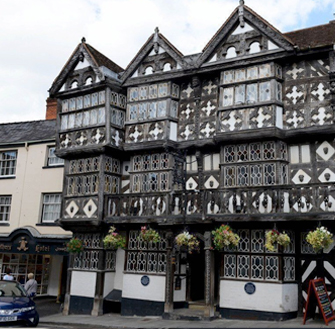
Historic outdoor market in the heart of Ludlow town centre.

Ludlow Museum at the Buttercross SY8 1AW, worth a visit for tourists and locals a like.
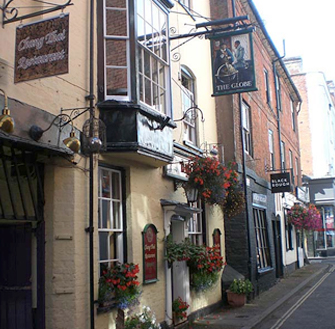
Throughout the year Ludlow hosts many diverse events in and around the town centre.